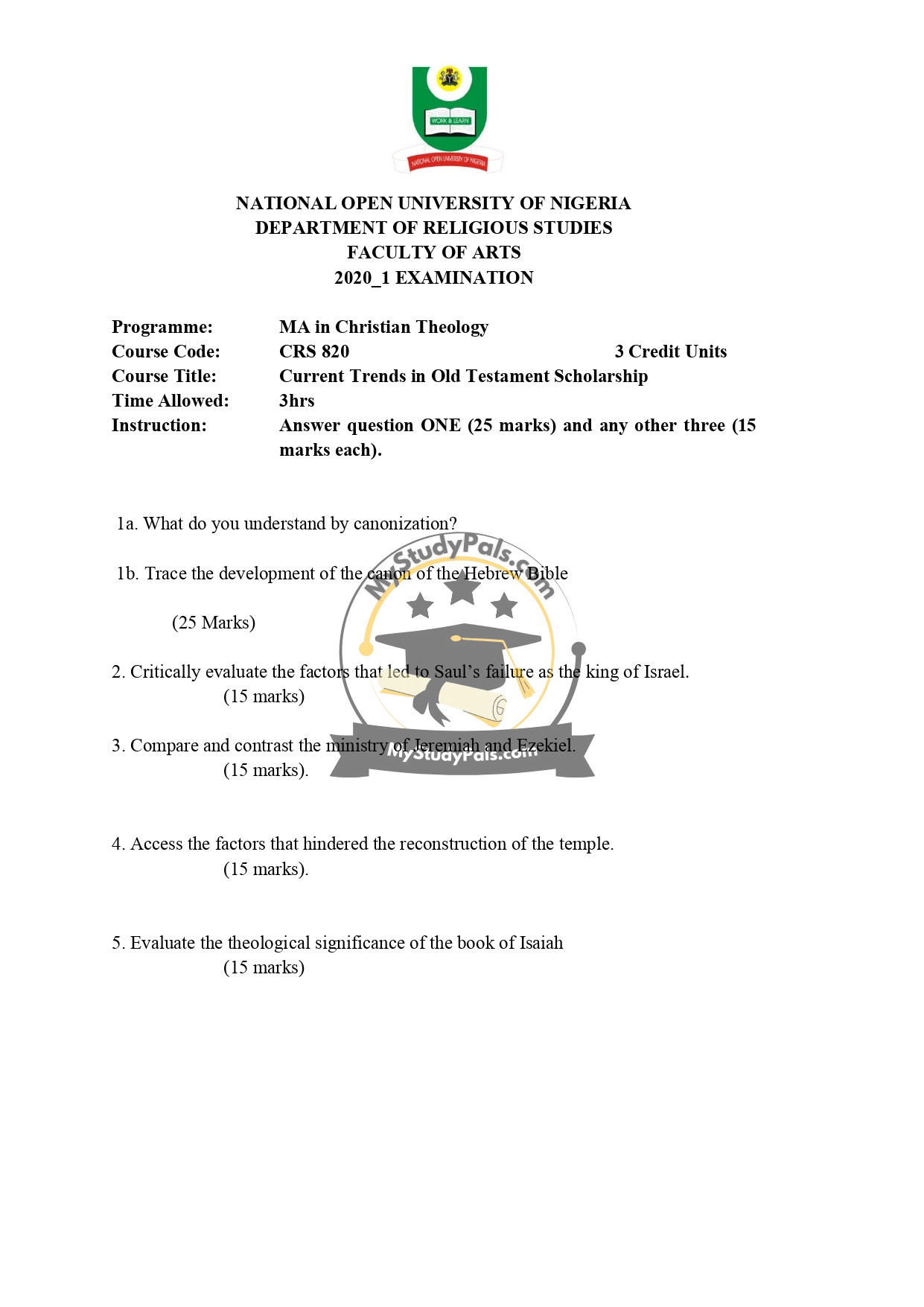ANWSER
—
Question 1a:
Answer:
Canonization refers to the process by which religious texts are officially recognized as authoritative and sacred scripture within a religious community. In the context of the Hebrew Bible, it involves the selection, preservation, and acceptance of certain writings as divinely inspired and binding for faith and practice.
—
Question 1b:
Answer:
The development of the canon of the Hebrew Bible occurred in stages:
1. Torah (Law): The first five books (Pentateuch) were likely canonized by the 5th century BCE, attributed to Moses and central to Jewish worship.
2. Nevi’im (Prophets): By the 2nd century BCE, prophetic books (e.g., Joshua, Judges, Isaiah) were recognized as authoritative.
3. Ketuvim (Writings): The final section (e.g., Psalms, Proverbs) was solidified by the 1st century CE, with debates over books like Esther and Song of Songs.
The Council of Jamnia (c. 90 CE) is often cited as formalizing the Hebrew canon, though evidence suggests the process was more gradual.
—
Question 2:
Answer:
Saul’s failure as king of Israel stemmed from:
1. Disobedience to God: His unauthorized sacrifice (1 Samuel 13) and sparing Amalekite spoils (1 Samuel 15) violated divine commands.
2. Jealousy and Paranoia: His obsession with David’s popularity led to irrational violence (1 Samuel 18–19).
3. Lack of Spiritual Integrity: He consulted a medium (1 Samuel 28), rejecting prophetic guidance.
These flaws undermined his leadership, leading to God’s rejection and his tragic demise.
—
Question 3:
Answer:
Similarities:
– Both were prophets during crises (Jeremiah pre-exile; Ezekiel during exile).
– Used symbolic acts (Jeremiah’s yoke; Ezekiel’s model of Jerusalem).
– Emphasized judgment and hope.
Differences:
– Audience: Jeremiah addressed Judah pre-exile; Ezekiel spoke to exiles in Babylon.
– Style: Jeremiah’s messages were emotional; Ezekiel’s were structured and visionary.
– Focus: Jeremiah highlighted repentance; Ezekiel stressed God’s glory and restoration.
—
Question 4:
Answer:
Factors hindering the temple’s reconstruction:
1. Political Opposition: Samaritans and local adversaries lobbied Persian authorities to halt construction (Ezra 4).
2. Economic Hardship: Post-exilic poverty delayed resources (Haggai 1:4–6).
3. Apathy: Prioritizing personal homes over God’s house (Haggai 1:2–4).
4. Leadership Gaps: Initial delays under Cyrus and Darius until prophets Haggai/Zechariah spurred action.
—
Question 5:
Answer:
The Book of Isaiah’s theological significance includes:
1. Monotheism: Affirms God’s uniqueness (Isaiah 45:5–6).
2. Messianic Hope: Foretells a suffering servant (Isaiah 53) and ideal king (Isaiah 9:6).
3. Justice and Redemption: Condemns oppression (Isaiah 1:17) and promises restoration (Isaiah 40).
4. Universal Salvation: Extends God’s plan beyond Israel to all nations (Isaiah 49:6).
—


